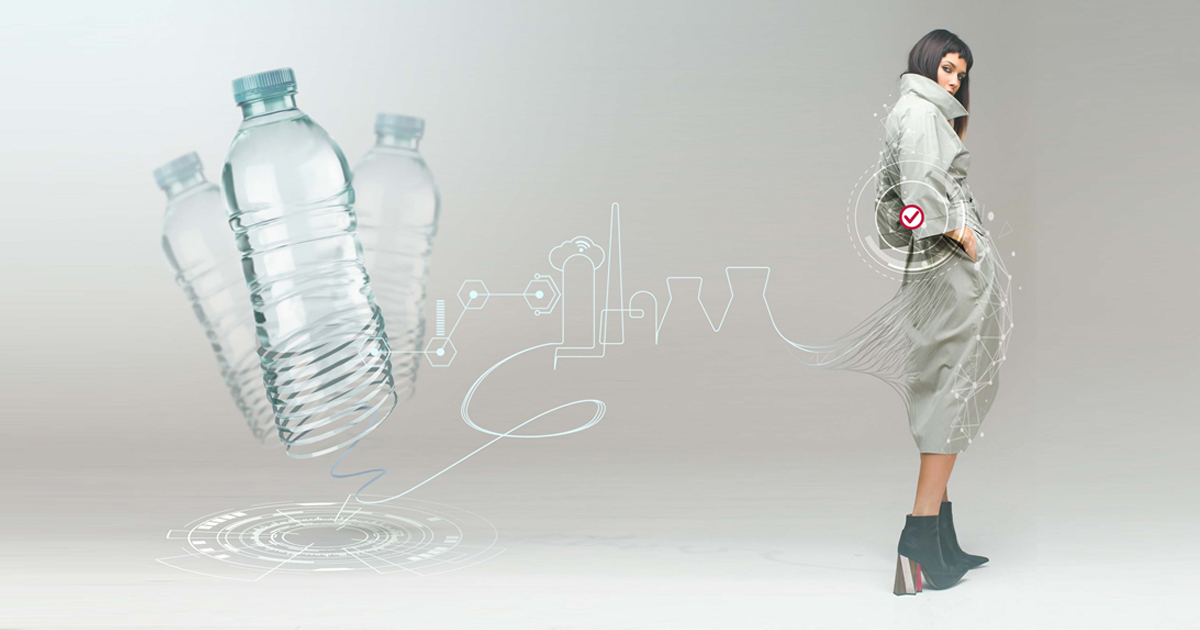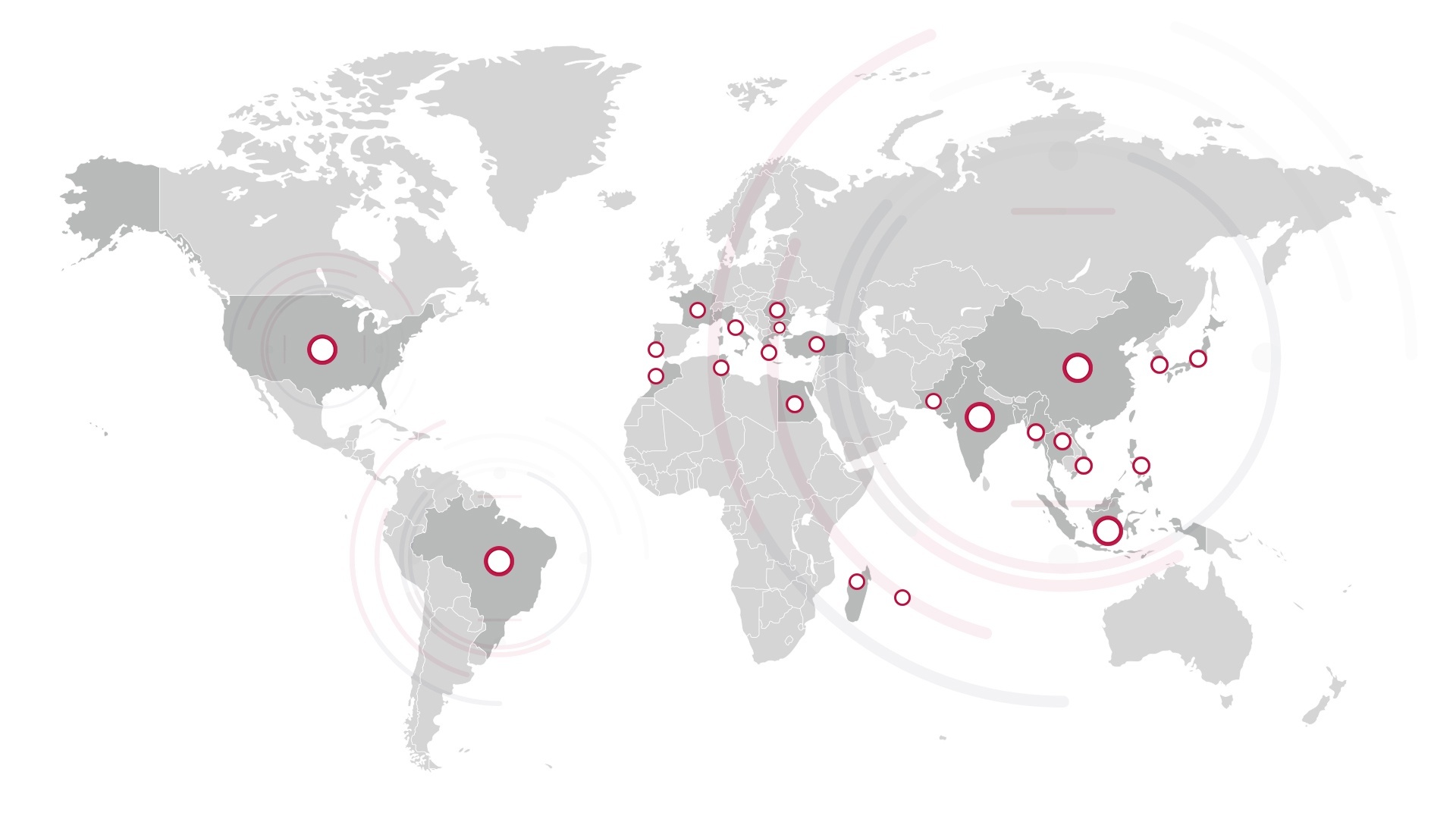Growing demand for sustainable products from consumers, governments, and NGOs has made the use of recycled materials in fashion tremendously valuable to brands as well as the environment. The COVID-19 crisis has also deepened this engagement with sustainability, driving consumers to pressure fashion brands to consider their social and environmental impacts and uphold their responsibilities. A 2020 consumer sentiment survey by McKinsey and Company found that 67% of consumers consider the use of sustainable materials to be an important purchasing factor, and 63% consider a brand’s promotion of sustainability in the same way.
In the fashion and apparel industry, one of the most popular sustainability strategies is to use recycled polyester (rPET) in products. The global fibers market has long been dominated by polyester (PET), which accounts for around 55% of the total volume of fibers produced globally. Of the 57 million tons of PET used each year worldwide, the apparel industry accounts for more than half at 32 million tons. The average percentage of rPET in textiles is currently around 15%; however, initiatives such as the 2025 Recycled Polyester Challenge are poised to boost that number to 45% by 2025, with a large number of brands already committed to the movement, including Adidas, Athleta, Banana Republic, G-Star Raw, H&M Group, Inditex, J.Crew, Lululemon Athletica, VF Corp. and many more.
What is recycled polyester?
To create virgin polyester (PET)–the world’s most common plastic—crude oil and natural gas are extracted from the earth and heated to form a molten liquid. The liquid is then spun into fibers to create polyester fabric or molded into plastic containers. These products aren’t biodegradable and will persist in the environment, even as they eventually break down. Recycled polyester (rPET) comes primarily from post-consumer PET bottles that are melted down and re-spun into new polyester fibers. One ton of recycled polyester saves 11,100kWh of energy—the equivalent of two years of energy consumption for an average household. Each kilogram of mechanically recycled polyester also represents a reduction in greenhouse gas emissions by more than 70% compared with virgin polyester.
A more demanding consumer landscape
With green consumers becoming more aware and critical of corporate sustainability claims, it’s essential that fashion brands and retailers are able to back up their rPET claims with proof to avoid greenwashing (claiming something as sustainable when it isn’t) and breaching regulations (the EU and GRS-V3 impose a minimum recycled polyester content of 20%). Greenwashing is currently the biggest challenge that specifiers and other purchasers face when selecting environmentally conscious products. Until now, the primary way for brands to corroborate the inclusion of rPET in their products is to rely on declarations and documents from suppliers and third parties. However, no matter how well you know your supply chain, relying solely on someone else’s information is fraught with risk. Brands that cannot validate their green claims may be accused of doing more for the environment than they actually are, which can cause significant reputational damage. What’s the best way to avoid this? Proper verification and authentication by a reputable third party using scientific testing methods can help your brand verify its green claims, stand out from the competition in a crowded marketplace, and foster consumer trust—often hailed as the most vital contributor to brand survival.
A scientific solution to verify recycled polyester
Following months of research, SgT and Worms Safety Laboratories have pioneered an innovative solution to detect and quantify the inclusion of rPET in textile products to prove its existence and avoid greenwashing. This superior solution is based on nuclear magnetic resonance (NMR) technology, which is highly sensitive, robust, accurate, auto-calibrated, and not affected by additional chemical substances such as dyes, viscose, or others. In simple terms, the process targets the presence of isophthalic acid (IPA), which is added to PET to give specific properties to the raw material. The testing method uses NMR technology to compare the IPA content in each testing sample to the average IPA content derived from a reference database of bottles collected in Europe, China, and India.
More accurate than any other method
Other methods are available to measure IPA content, including Fourier Transform Infrared Spectroscopy, Raman, Liquid Chromatography, and Gas Chromatography; however, these processes share disadvantages, including the generally higher uncertainty of the testing equipment and the sensitivity to other substances present in the sample. The NMR-based method developed by SgT and Worms Safety Laboratories is highly sensitive and specific, with lower detection limits and greater certainty. The PET bottle reference library is continually monitored and updated, and any changes in PET quality on the market is reflected in the test results.
Relying solely on someone else’s information and declarations is inherently risky. Any claims found to be inaccurate, misleading, or outright false can ultimately damage your brand and also lead to noncompliance. Accurate scientific testing is the only way to be 100% sure that the amount of rPET in your products matches what you say it is.
Learn more about how SgT helps brands and retailers verify and quantify rPET in their products here.



